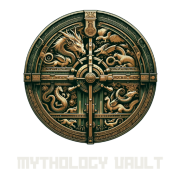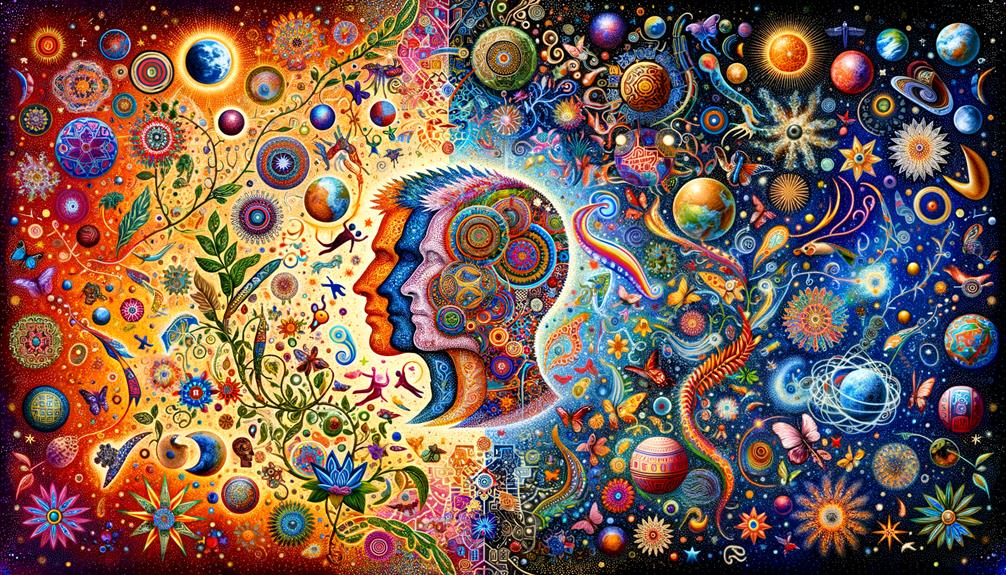The night sky glittered with stars, reflecting the eternal union of Ometecuhtli and Omecihuatl, the masculine and feminine forces of the Aztec creation myth. This divine coupling exemplified the sacred balance of opposing yet complementary energies that govern the universe. Their interconnected nature wasn't solely about cosmic origins; it underscored the profound need for harmony in our lives. How did these intertwined deities shape the Aztec worldview, and what lessons can we draw today about attaining equilibrium? Exploring their story offers insights worth examining.
Concept of Duality
At the core of Aztec beliefs, Ometeotl represents the eternal dance between male and female forces, an intricate balance fueling all creation. This supreme deity combines Ometecuhtli (Lord of Duality) and Omecihuatl (Lady of Duality) into one being, symbolizing the coexistence of contrasting energies.
Ometeotl's androgynous nature reflects the interdependence of masculine and feminine. These energies complement each other, sustaining life's delicate equilibrium. This duality transcends gender, encompassing broader concepts like light and dark, order and chaos, life and death. True unity arises from harmonizing these opposites.
For the Aztecs, the cosmos itself mirrors this sacred balance. Ometeotl's essence teaches that creation thrives on the interplay of complementary forces. This understanding permeated their worldview, shaping their reverence for the intricate equilibrium underpinning the universe.
Ometeotl's Origin
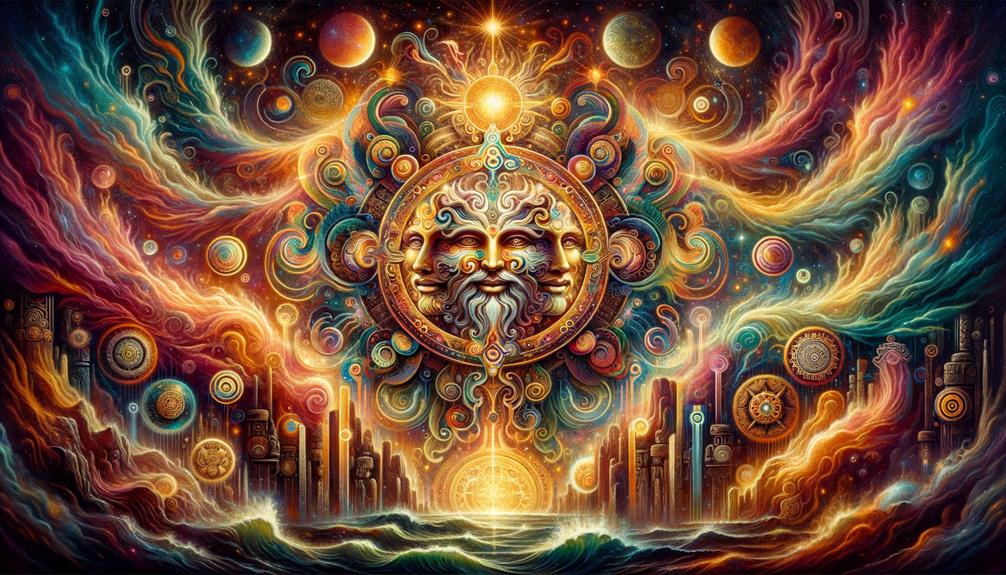
Aztec legends describe Ometeotl emerging from a primordial void, embodying the fundamental essence of creation. This supreme deity, composed of Ometecuhtli and Omecihuatl, represented the unity of dualism within the Aztec worldview. Residing in the highest celestial realm, Ometeotl's domain remained untouched by human influences, where the forces of creation and fertility intertwined harmoniously.
While some scholars debate Ometeotl's presence in primary sources, the mythological narrative is intricate and profound. The deity's dual nature reflects the balance essential to life and the cosmos. Ometeotl's offspring, including Xipe Totec, Tezcatlipoca, Quetzalcoatl, and Huitzilopochtli, played pivotal roles in shaping and guiding the Aztec world.
| Aspect | Details | Significance |
|---|---|---|
| Origin | Emerged from the cosmic void | Embodiment of primal creation |
| Dual Nature | Ometecuhtli and Omecihuatl | Unity of dualism |
| Residence | Thirteenth heaven | Beyond human influence |
| Children | Xipe Totec, Tezcatlipoca, Quetzalcoatl, Huitzilopochtli | Influential in Aztec mythology |
Through the unity of Ometeotl, the cosmos found its rhythm, confirming the profound essence of duality in creation.
Roles and Attributes
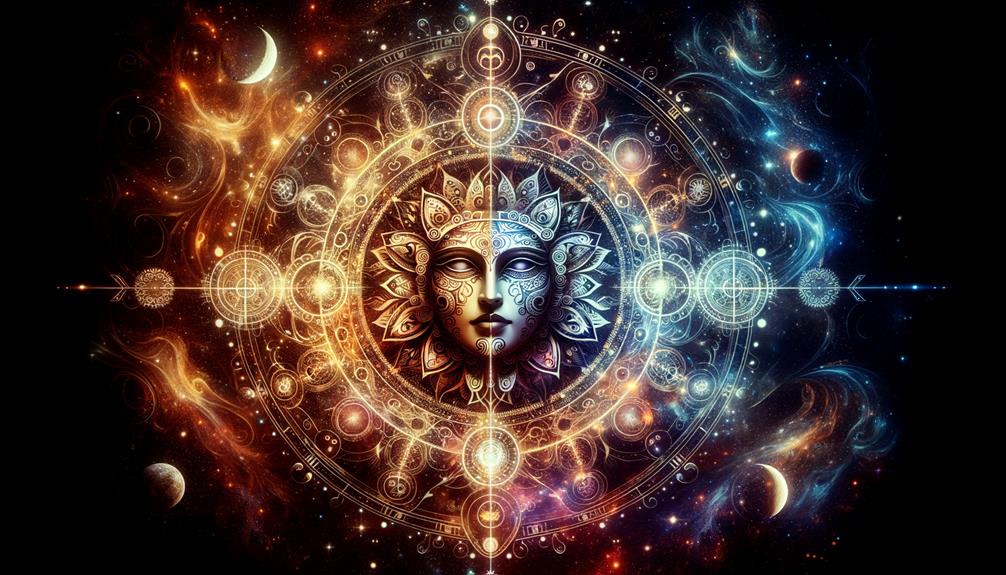
Delving into the origins of Ometeotl, the dual creator deity in the Nahuatl tradition, unveils profound insights shaping our cosmos and existence. Ometeotl transcends a mere deity, embodying the unity of opposites through the energies of Ometecuhtli (Lord of Duality) and Omecihuatl (Lady of Duality). This merging confirms the interdependence of masculine and feminine forces, pivotal for creation and equilibrium.
Various Codex manuscripts vividly depict Ometeotl's attributes, highlighting their role as the supreme creator presiding over the highest celestial realm. Their significance in Aztec cosmology is undeniable, personifying the delicate balance of contrasting energies.
Ometeotl's multifaceted roles encompass creation as the originator of all existence, crafted from the unity of opposites. As a fertility symbol, they nurture the fecundity of land and people. Moreover, Ometeotl maintains cosmic harmony by representing the interdependence of energies.
Ultimately, Ometeotl's lasting legacy reflects the eternal quest for equilibrium and interconnectedness pervading the universe.
Myths and Legends
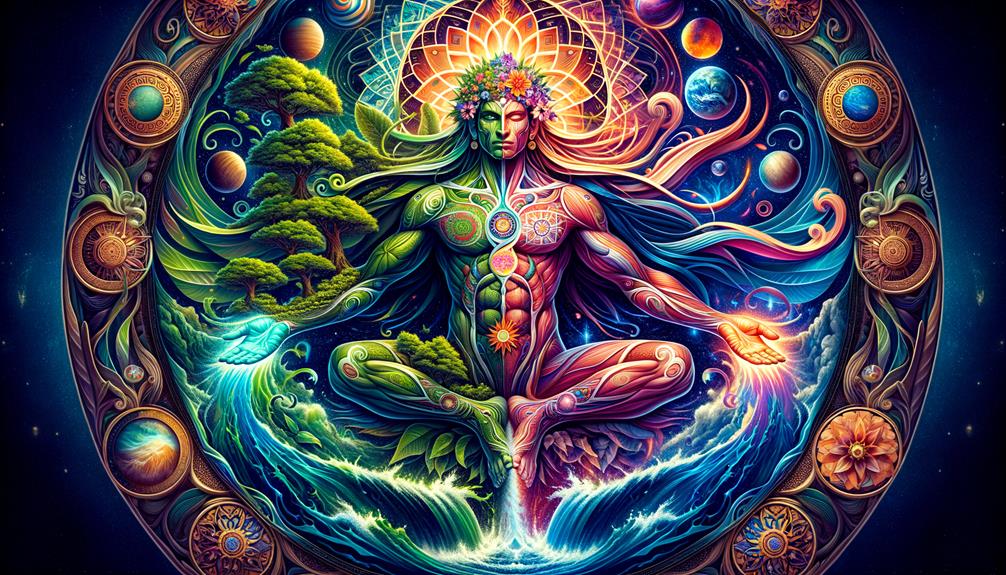
The tales of Ometeotl, the Aztec creator deity, intricately depict the universe's profound unity and equilibrium. This dual god, formed by Ometecuhtli and Omecihuatl, represents opposing yet complementary forces—male and female, light and dark, creation and destruction—underscoring life's interconnectedness.
In the beginning, Ometeotl emerged from the primordial void, bringing forth the cosmos. Four mighty offspring followed: Xipe Totec, Tezcatlipoca, Quetzalcoatl, and Huitzilopochtli, each sculpting the world through cycles of creation and destruction. This inherent duality ensured life thrived harmoniously.
Throughout this myth, Ometeotl stands as existence's wellspring, a symbol of the interconnectivity binding the universe. This sacred duality reminds us of the delicate equilibrium sustaining life, making Ometeotl a cornerstone of Aztec cosmology and a timeless representation of opposing forces in harmony.
Symbolism and Influence
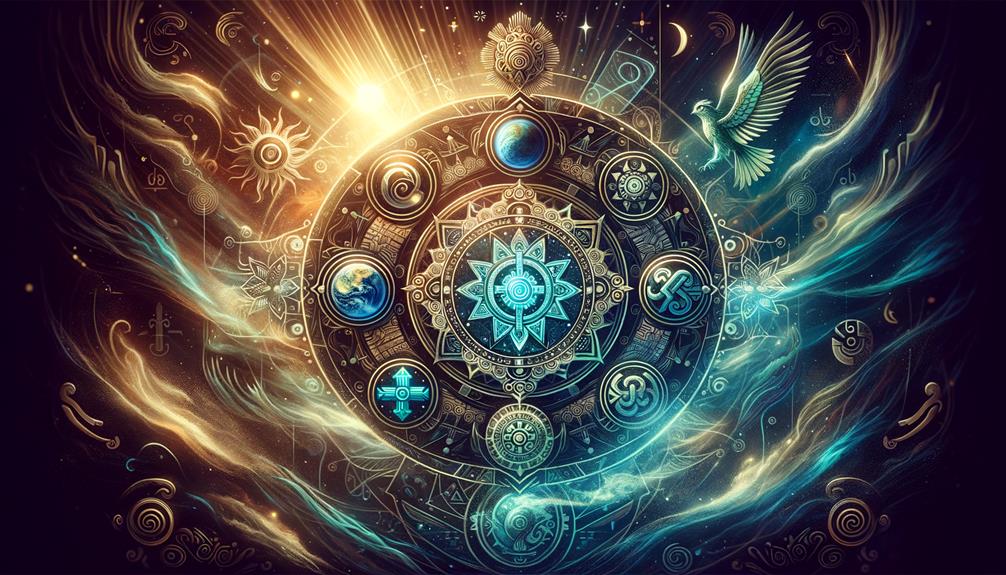
Ometeotl's symbolism intertwines opposing forces, core to Aztec cosmology's balance and harmony. As the Aztec creator, Ometeotl represents male and female energies' duality – a foundational concept in classical Nahuatl. Understanding this duality illuminates our place in the cosmos.
Ometeotl's influence resonates across various forms:
- Codices: Mexican codices depict Ometeotl with androgynous features, symbolizing contrasting forces' interdependence.
- Rituals: Worship rituals highlighted in Mythology Codices emphasized Ometeotl's role in creation and fertility rites, reflecting balance's significance.
- Language: The Nahuatl Dictionary poetically captures Ometeotl's dual nature, preserving cultural relevance.
Modern artists and scholars reference Ancient Mexican Symbols, bridging ancient wisdom with contemporary perspectives on unity and balance – timeless themes guiding our journey towards understanding harmony.
Frequently Asked Questions
What Was Ometeotl the God Of?
Ometeotl symbolized the union of male and female energies, maintaining cosmic harmony. Remarkably, Aztec rituals honored this deity more than any other, underscoring the cultural significance of achieving equilibrium. Ometeotl's essence centered around balancing opposing forces, fostering universal balance.
Who Is the Mayan God of Duality?
The Mayan god of duality goes by Ometeotl, embodying both masculine and feminine energies as Ometecuhtli and Omecihuatl. This deity brings opposites into harmony, representing creation, balance, and the cosmic cycle of unity and separation.
Who Is the God of Duality?
When delving into Aztec mythology, Ometeotl stands out as the embodiment of duality and balance. This deity represents the unity of opposites, combining masculine and feminine energies to symbolize creation and fertility. Ometeotl's overarching presence highlights the interplay of contrasting forces within a cohesive whole.
Who Is the Mexican God of Duality?
Ometeotl, the supreme deity in Aztec mythology, personifies the cosmic balance by merging male and female essences. As Ometecuhtli and Omecihuatl, this divine couple presides over the highest celestial realm, guiding creation and the hero's transformative journey. Ometeotl's duality symbolizes the harmonious union of opposing energies, a concept deeply rooted in Mexican spiritual traditions.
